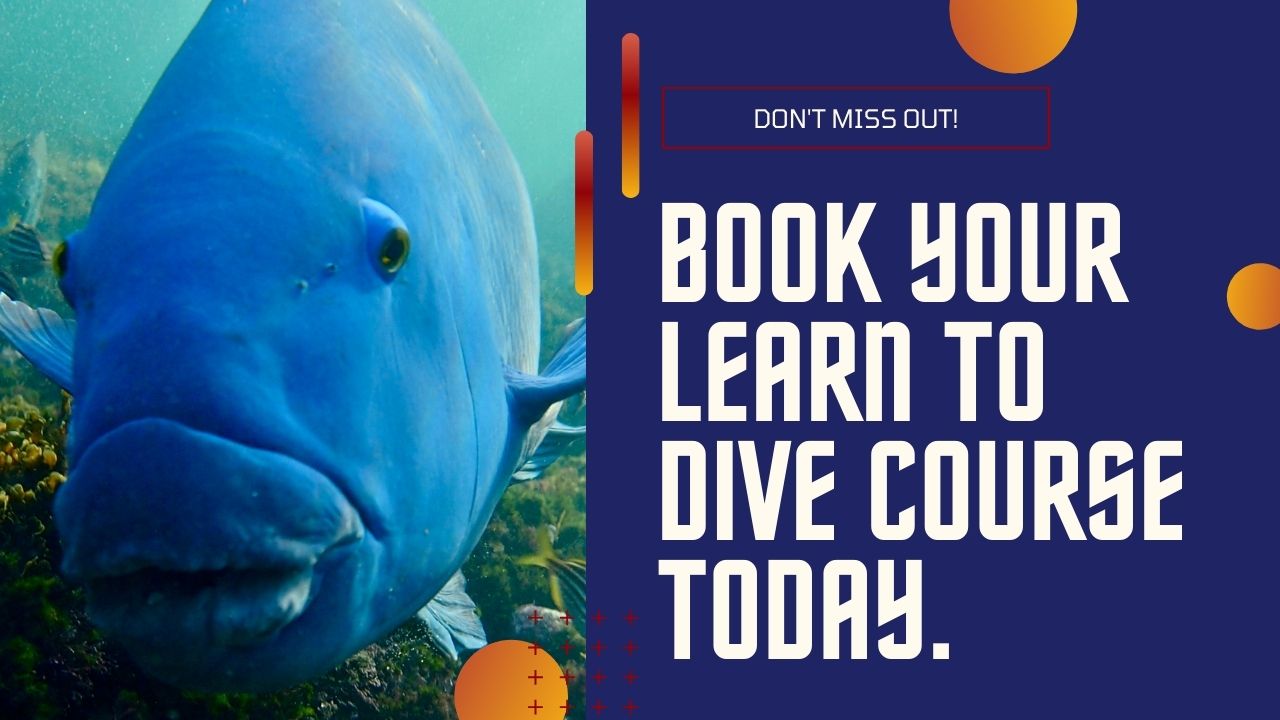You have 0 product(s) in your cart.
Abyss Scuba Diving
Sea Dragon Mysteries Unveiled: Ultimate Scuba Diver's Guide
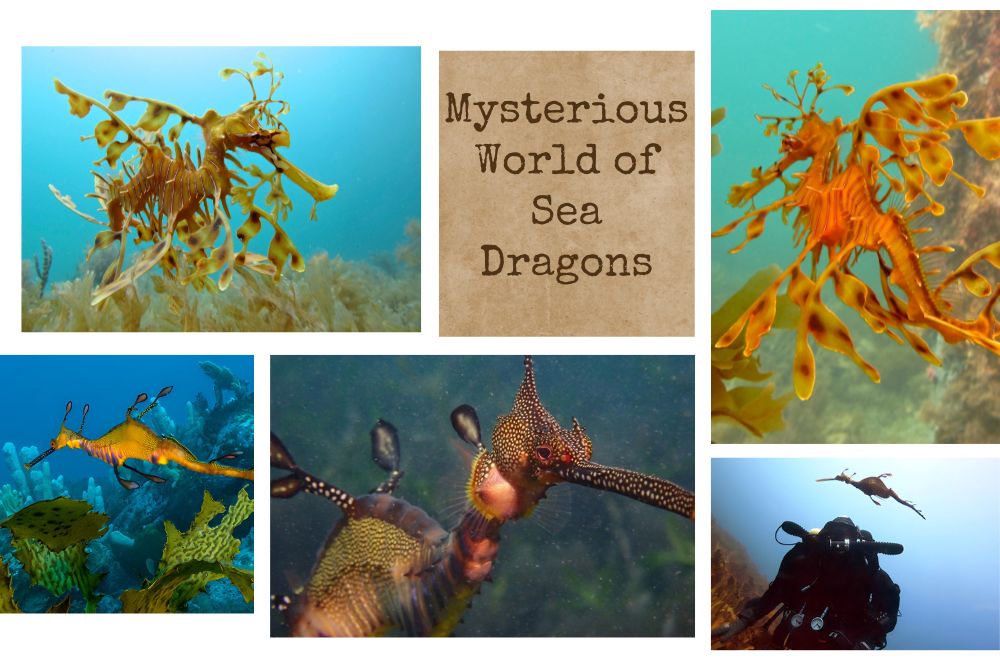
Uncovering the Mysterious World of Sea Dragons: A Guide for Scuba Divers
Have you ever wondered about the enigmatic sea dragons that dwell in the depths of the ocean? These captivating creatures capture our imaginations with their otherworldly appearances and fascinating behaviours. Prepare to embark on an underwater adventure as we uncover the mysterious world of sea dragons and learn how to spot them in their natural environment, all while understanding the conservation efforts being made to protect them.
Short Summary
-
Explore the captivating world of sea dragons, rare and camouflaged marine life found in Australia's waters.
-
Learn about their unique reproductive process & natural defence strategies to protect themselves from predators.
-
Support conservation efforts for these vulnerable species by contributing to citizen science initiatives such as data collection & monitoring.
Discovering Sea Dragons
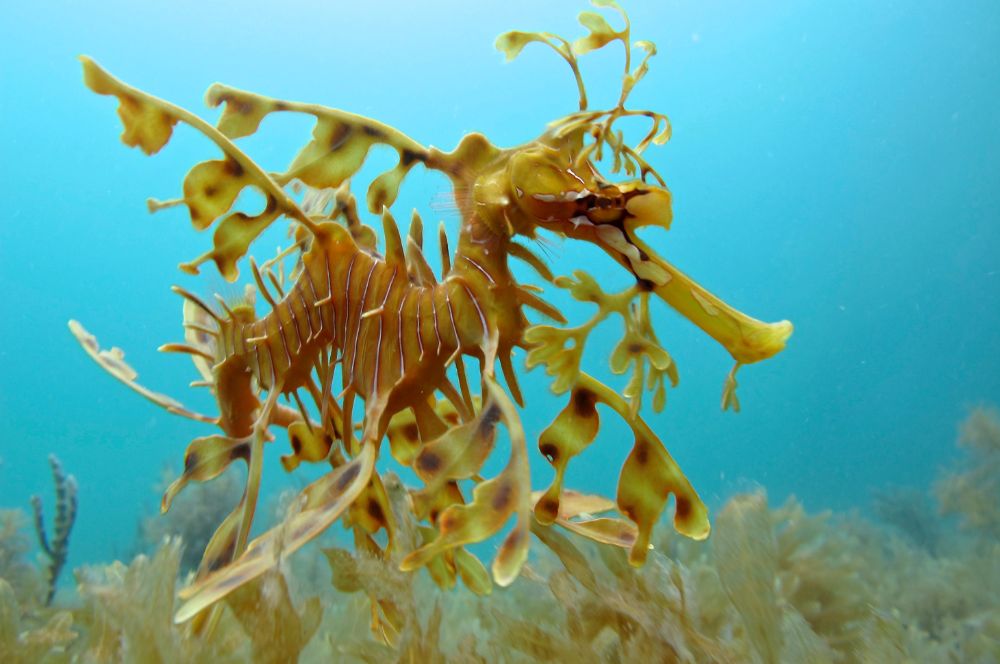
There is a hidden world beneath the waves, home to some of the most captivating marine life on the planet. Among these fascinating creatures, sea dragons stand out with their unique appearances and elusive nature. These mesmerizing denizens of the deep are closely related to fishes, seahorses and pipefish and are native to the coastal waters of Australia. With around 85-90% of the marine life in Australia's southern seas being exclusive to the region, sea dragons are truly a sight to behold.
Three species of sea dragons grace the ocean depths: the leafy sea dragon (Phycodurus eques), the weedy sea dragon (Phyllopteryx taeniolatus), and the ruby sea dragon (Phyllopteryx dewysea). These species share some similarities, such as their elongated bodies and fused jaws, but each species boasts its own unique characteristics that set them apart from the rest.
Let's dive deeper and explore the captivating world of these extraordinary marine creatures.
Leafy Sea Dragon
The leafy sea dragon is a rare and unique fish adorned with leaf-like fins and frilly outgrowths that make it a master of disguise. In the colder rocky reefs off south and western Australia, these creatures can be found at a depth of 3-50m, often seen in sand patches near the reefs, blending seamlessly into their marine environment.
A typical leafy sea dragon measures around 30 cm in length and has a fascinating reproductive process. Male leafy sea dragons are responsible for nurturing and fertilizing the eggs in a protected brood pouch for up to nine weeks.
This intriguing creature is a sight to behold and a testament to the wonders of the natural world.
Weedy Sea Dragon
The weedy sea dragon, another captivating seahorse relative, calls the Australian waters home and shares some similarities with the male leafy sea dragon. These creatures inhabit waters between 12-23°C at a 5-30m depth and can be found in kelp forests, rocky reefs, and seaweed or seagrass beds.
With their elongated snouts and slender, reddish-brown bodies adorned with yellow and purple accents, weedy sea dragons are truly a remarkable sight. However, their beauty comes with vulnerability; they face threats such as habitat destruction, pollution, and overfishing, which put their survival at risk.
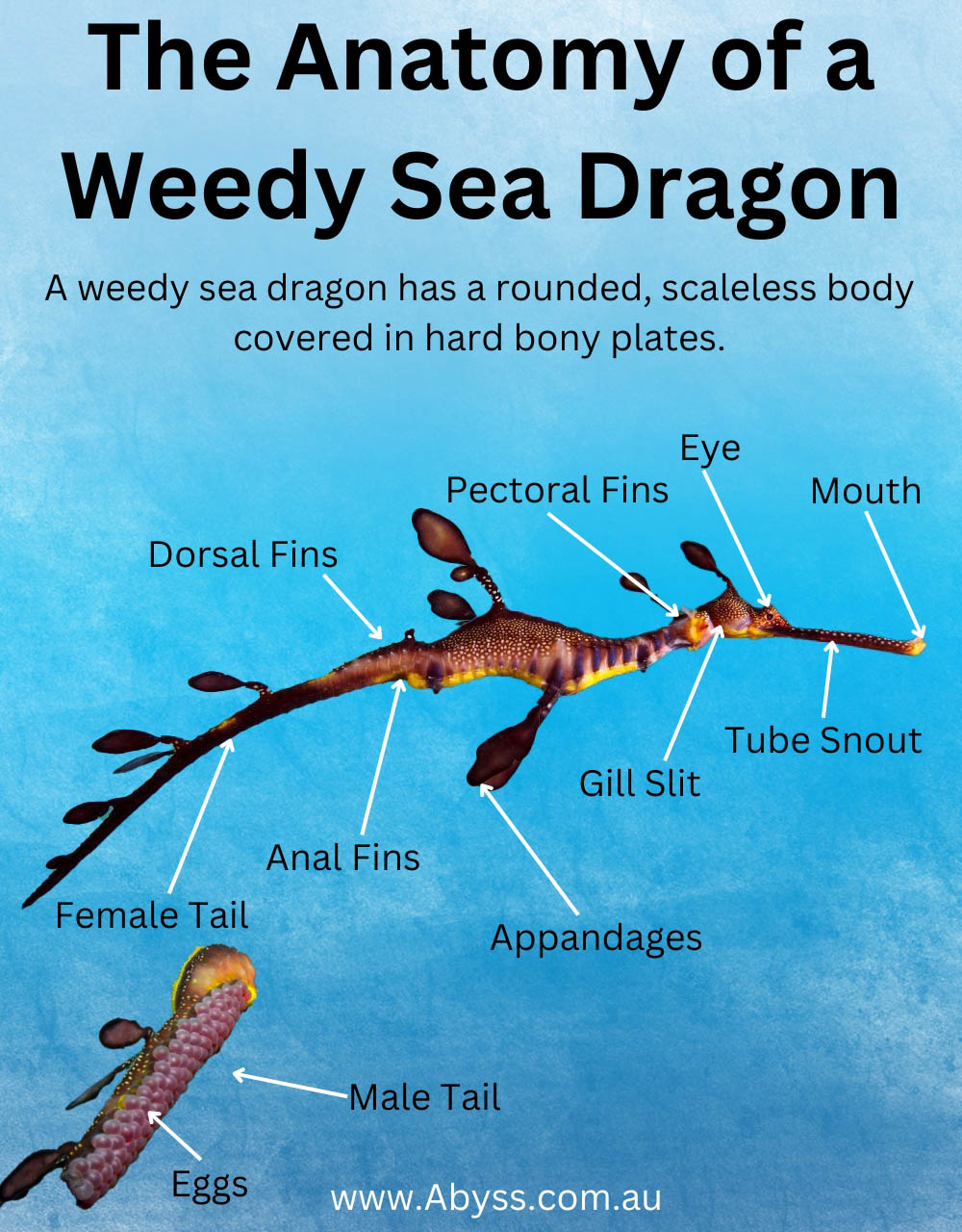
Ruby Sea Dragon
The ruby sea dragon is yet another species of sea dragon that graces the waters near Western Australia. This diminutive creature, reaching a maximum size of just 20 cm, stands out due to its vivid red colouration and extended, leaf-like appendages. The ruby sea dragon was discovered in 2015. The Ruby Sea Dragon is found off the coast of Western Australia and lives in water more than 50m deep.
The ruby sea dragon feeds on small crustaceans, such as shrimp and amphipods, and is currently listed as Vulnerable on the IUCN Red List. Conservation efforts are underway to help protect this striking species and its habitat.
Dive into specific lesser-known facts about sea dragons
Now that we've introduced the three species of sea dragons, it's time to reveal some lesser-known facts about these enigmatic creatures. Sea dragons are true masters of camouflage, utilizing a combination of intricate patterns, jointed plates, and spines along their dorsal side to blend in with their surroundings and evade predators. In fact, their camouflage skills are so effective that they can often be invisible to the untrained eye.
Sea dragons feast primarily on mysid shrimp, small crustaceans, plankton, and larval fish, using their unique, tube-like snouts to suck in their prey. As for their reproductive process, sea dragons are ovoviviparous, meaning the eggs remain within the female until they hatch. The male sea dragon transfers the eggs via a spermatophore to the female, which she stores in her oviduct until the eggs are fertilised.
The Art of Camouflage: Sea Dragons' Natural Defense
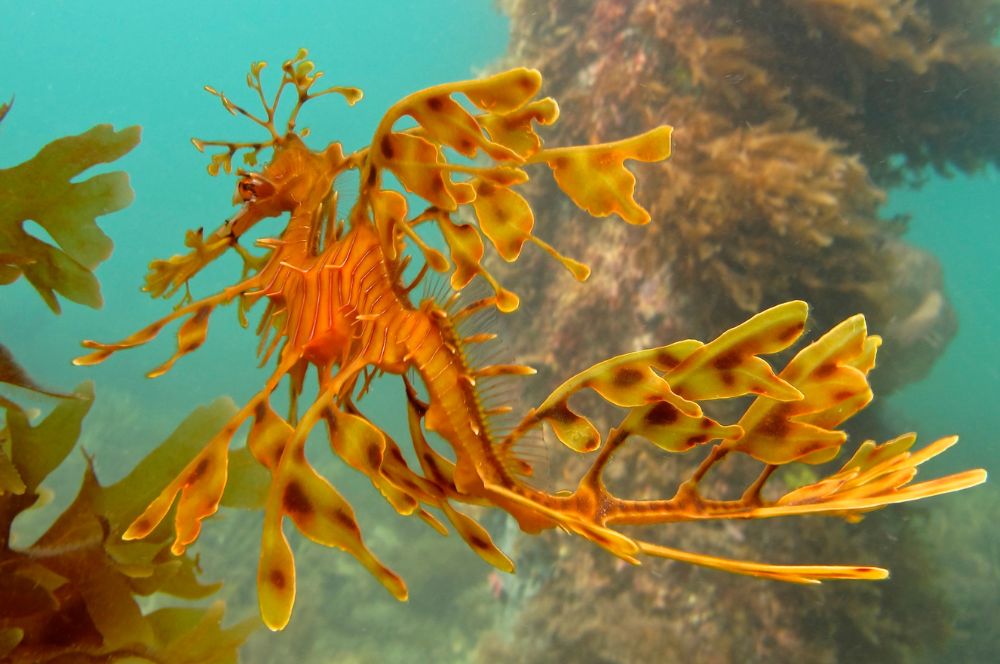
Sea dragons rely heavily on their remarkable camouflage skills to protect themselves from predators and approach prey stealthily. Their leafy appendages, ability to blend in with their seaweed and seagrass habitats, and capacity to sway like plants in the water current provide them with a protective shield that is essential for their survival.
Despite their impressive camouflage abilities, sea dragons still face numerous challenges in their natural environment. They must contend with predators, pollution, and climate changes, all threatening their survival. Understanding these threats and the intricate ways in which sea dragons protect themselves sheds light on the importance of conserving their habitat and the delicate balance of the marine ecosystem.
Masters of Disguise
Sea dragons use their leaf-like appendages, combined with their remarkable patterns and colours, to effectively disguise themselves in their environment. Their slow-swimming nature makes them particularly reliant on camouflage for protection, as they need to approach their prey without being detected.
Not only do these creatures possess sharp spines along their body for defence, but they also have the ability to change colour to better blend in with their surroundings. This incredible level of camouflage allows sea dragons to remain hidden from predators and thrive in their natural habitat.
Threats to Survival
Despite their masterful camouflage, sea dragons face several threats to their survival. Habitat destruction and deterioration, pollution, overfishing, and global warming all pose significant risks to these fragile creatures.
Habitat loss and degradation can lead to reduced food sources, increased predation, and fewer suitable breeding sites for sea dragons. On the other hand, pollution can have detrimental effects on water quality, increase the prevalence of disease, and reduce the number of available breeding sites. Overfishing and climate change can also result in a decrease in available food sources, an increase in predation, and a decrease in the number of suitable breeding sites.
Understanding and addressing these threats is crucial to ensure these magnificent creatures' survival.
The Role of Male Sea Dragons in Reproduction
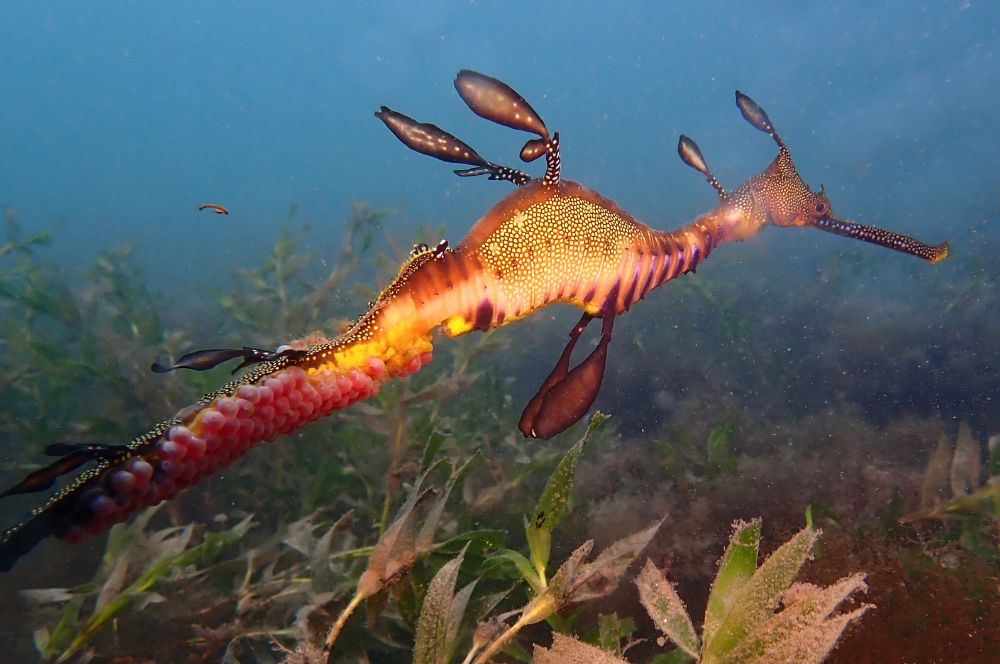
One of the most fascinating aspects of sea dragons is their unique reproductive system. In a surprising twist of nature, the male sea dragons carry and fertilize the eggs in a brood pouch for eight weeks. This astonishing role reversal showcases the incredible diversity of reproductive strategies found in the animal kingdom and highlights the adaptability of these captivating creatures.
Sea dragons are a remarkable species, and their reproductive system is just one of their many fascinating biological aspects. They are able to survive in a wide range of environments.
Tips & Guidelines for Spotting a Sea Dragon
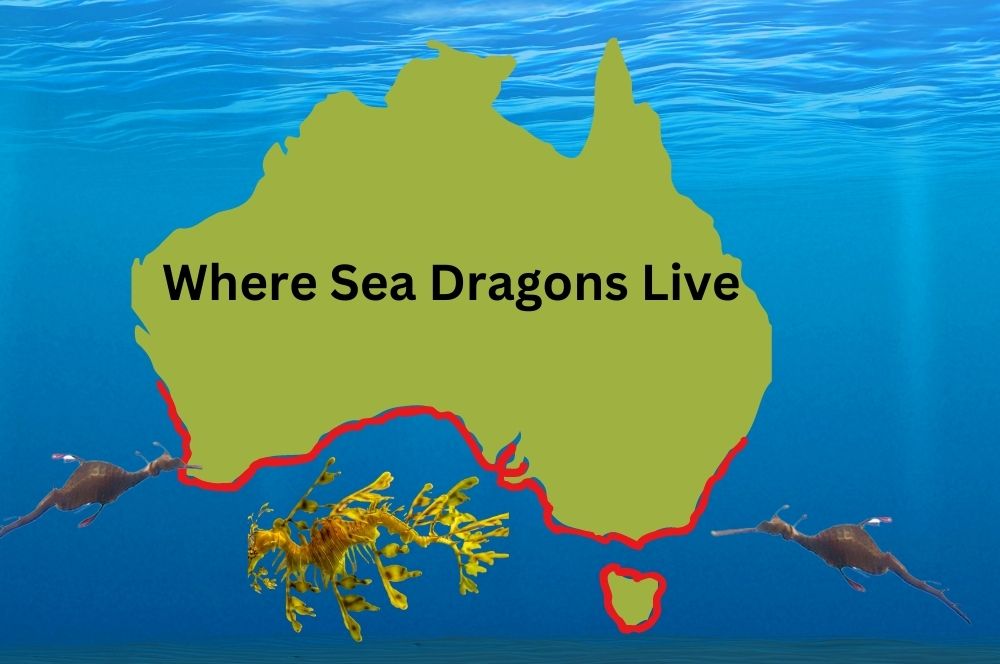
Now that we've explored the world of sea dragons, it's time to learn how to spot them in their natural habitat. Though their exceptional camouflage abilities make them difficult to find, some certain tips and guidelines can increase your chances of spotting these elusive creatures.
In this section, we will delve into where to find sea dragons, the best diving spots for sea dragon sightings, seasonal patterns, tips for spotting sea dragons, and even some advice on how to capture the perfect photograph of these enchanting marine marvels.
Where to Find Sea Dragons
Sea dragons can be found in the waters surrounding Australia's southern and eastern coasts, including Tasmania, in the Pacific and Indian Oceans. They inhabit rocky reefs, patches of sand near the reefs, seaweed beds, and seagrass meadows, making these environments prime locations to search for these remarkable creatures.
Sea dragons are a type of seahorse, and they are the only species of seahorse that can be found in the wild in Australia. They have a unique body shape, with a long snout and a tail.
Specific diving spots are known for sea dragon sightings
Some diving spots are particularly well-known for sea dragon sightings. Rapid Bay Jetty and The Bluff in Victor Harbor in South Australia, Port Phillip Bay, including Rye Pier in Victoria, and the entrance to Botany Bay in Sydney, are prime locations to observe these captivating creatures in their natural habitat.
Seasonal patterns and best times to see sea dragons
Sea dragons, such as weedy and leafy sea dragons, tend to breed during the warmer months of the southern hemisphere, beginning in the Australian springtime in October and ending in the early summer.
As a result, these months are ideal for spotting sea dragons as they are more likely to be active and visible during their breeding season.
Tips to spot Sea dragons
Locating sea dragons can prove difficult, given their exceptional camouflage skills. To increase your chances of finding these elusive beings, avoid looking in the kelp, as they are particularly hard to spot there. Instead, focus on the sand line – the point where kelp meets sand – as sea dragons tend to congregate in these areas while hunting Mysid shrimp.
Since sea dragons move at a leisurely pace, take your time and practice good buoyancy control. Maintain stillness and concentrate your gaze on patches of grass or the sand line where they might be hunting. Patience is crucial when attempting to uncover these well-disguised aquatic marvels.
Once you've spotted your first sea dragon, subsequent sightings become much easier. For the best initial experience, consider enlisting the help of an experienced guide on your first seadragon dive. Their expertise will undoubtedly enhance your underwater exploration in the captivating world of sea dragons.
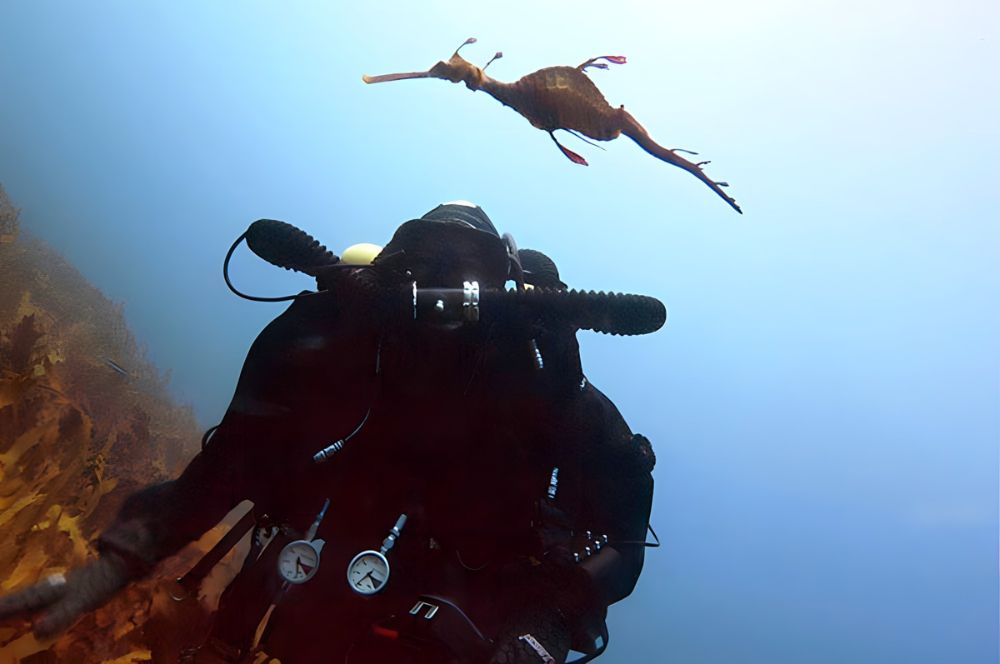
Tips for Capturing the Perfect Photos of Sea Dragons
Snapping exceptional photos of sea dragons can be an immensely gratifying endeavour, but it necessitates patience and the proper technique. Keep in mind that sea dragons are often frightened by the sound of divers' bubbles and tend to swim away slowly, typically offering a view of their backs.
To maximize your chances of capturing the perfect shot, consider using a rebreather if you're trained in its use. For those who aren't rebreather-trained, the Hollis 500SE serves as a suitable alternative. Utilize natural light, approach the sea dragon cautiously without disturbing it, and take multiple shots from various angles to increase your likelihood of obtaining that stunning image.
By following these tips, you'll be well-prepared to document your underwater encounters with these captivating creatures in the mysterious world of sea dragons.
Conservation Status and Efforts
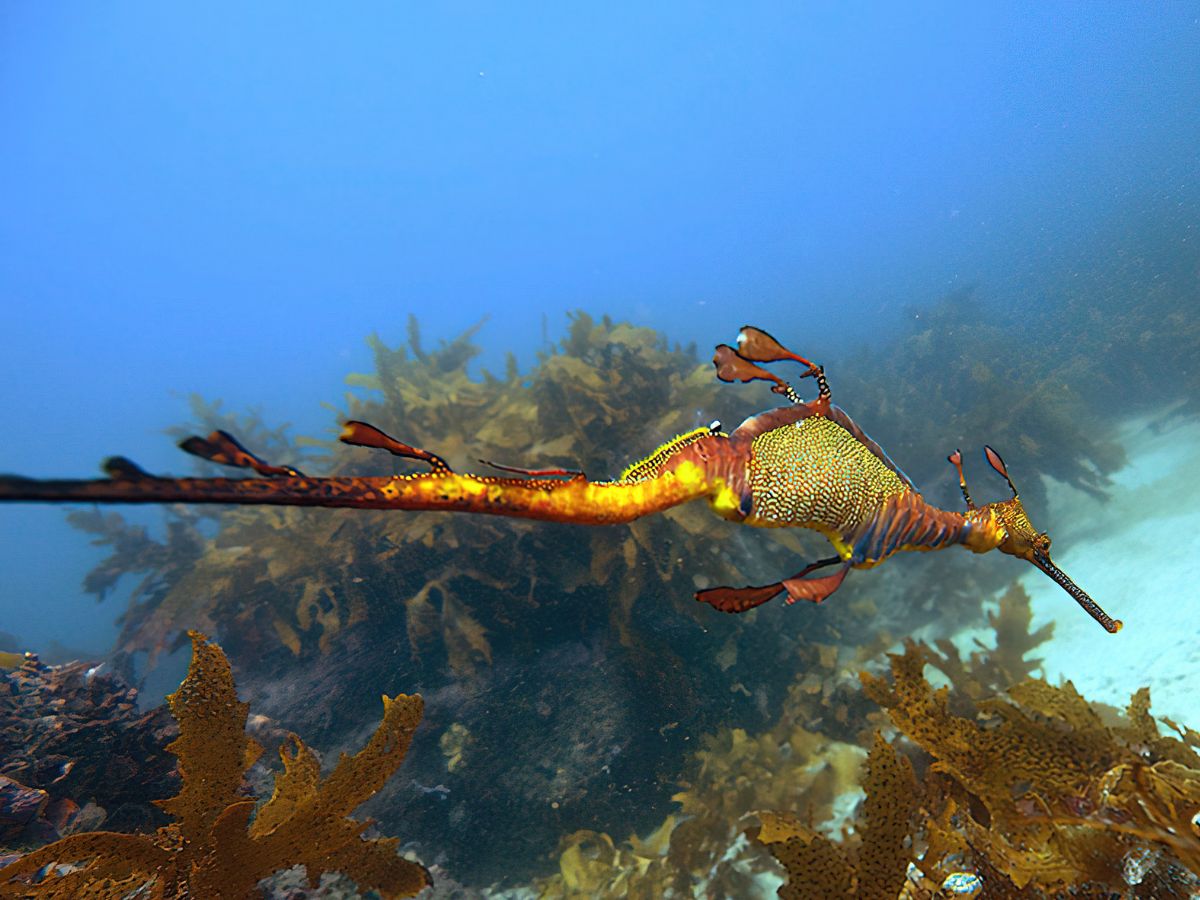
As we've discovered, sea dragons are truly exceptional creatures that face a variety of challenges in their natural environment. It is essential to understand their conservation status and the efforts being made to protect them in order to ensure their continued survival.
In this section, we will discuss the IUCN classification of sea dragons, the conservation initiatives that have been implemented to safeguard their populations, and how scuba divers can contribute to citizen science in order to support sea dragon conservation efforts.
IUCN Classification
Sea dragons are currently classified as "Approaching Vulnerable" on the IUCN Red List of Threatened Species, which categorizes marine creatures based on their risk of extinction. Factors contributing to this classification include their restricted geographical range and the damage to their natural habitat through pollution and habitat destruction.
Conservation Initiatives
Several conservation efforts are being made to protect sea dragons, such as SeadragonSearch, a community-based research project, and citizen science programs. Additionally, certain aquariums, like the Monterey Bay Aquarium and the Dallas World Aquarium, feature permanent exhibitions devoted to sea dragon conservation.
These initiatives aim to raise awareness about the plight of sea dragons and promote their conservation in the wild.
Citizen Science & What Scuba Divers Can Contribute
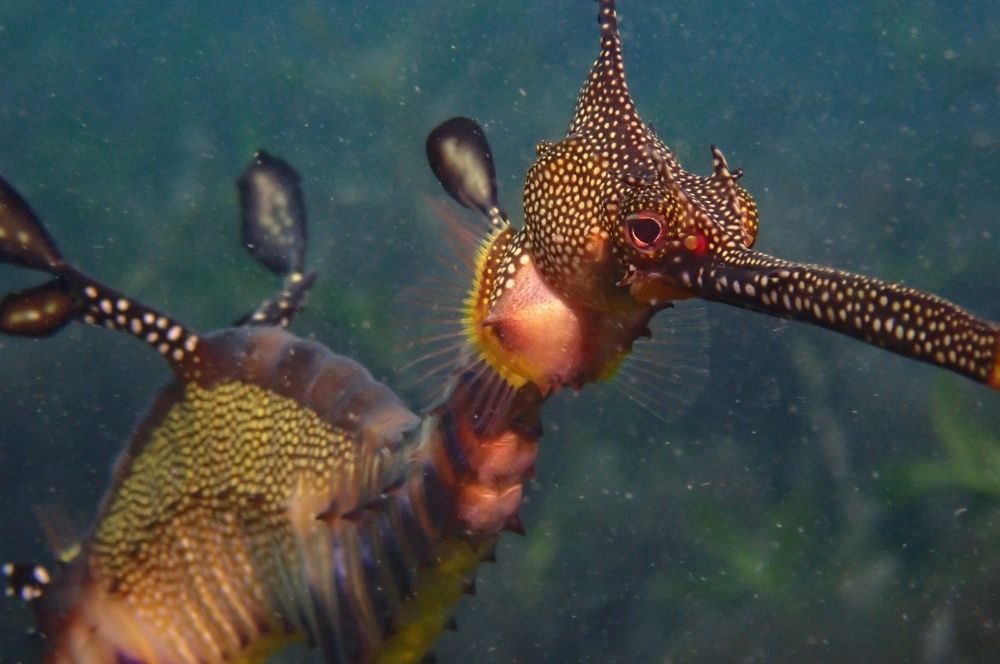
Citizen science is a powerful tool for engaging the public in scientific research and expanding our knowledge of the natural world. Scuba divers, in particular, can contribute to sea dragon conservation efforts by participating in data collection and monitoring initiatives.
By getting involved in citizen science projects, scuba divers can help gather valuable information on sea dragons and their habitats, contribute to identifying and documenting new species, and support ongoing conservation efforts.
As we continue to uncover the mysteries of the sea dragon world, we must work together to ensure the survival of these mesmerizing creatures for generations to come.
Summary
In this journey through the mysterious world of sea dragons, we have explored their unique characteristics, the art of camouflage, males' role in reproduction, tips for spotting them in the wild, and the ongoing conservation efforts to protect them. As we continue to learn more about these captivating creatures, we are responsible for supporting and contributing to their conservation. With each dive and every discovery, we can help ensure that the enchanting world of sea dragons remains a thriving and vibrant part of our planet's marine ecosystem.
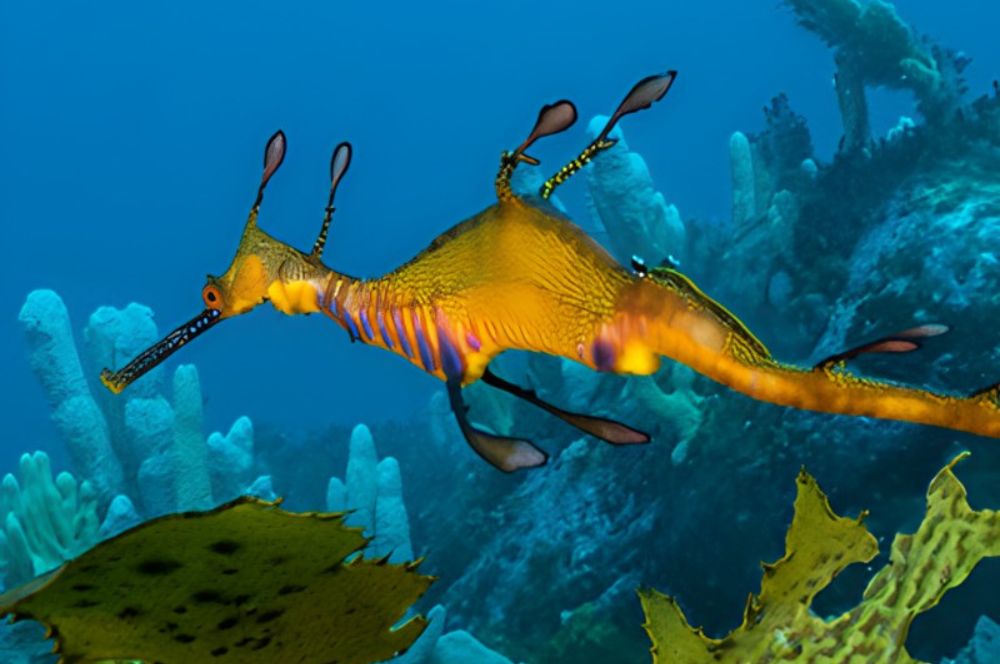
Frequently Asked Questions
Are sea dragons in Australia?
Sea dragons can be found in Australia, particularly along the Great Southern Reef that covers 71,000 sq. km of the continent's southern coasts from New South Wales to Western Australia. Common sea dragons are the only species of sea dragons found in Australia, and they have reddish colouring, yellow and purple markings, and small leaf-like appendages providing camouflage and several short spines for protection.
These features make them well-suited to their environment, and can be found in depths of up to 50m. They feed on small crustaceans and molluscs and can grow up to 45cm in length.
What are the three species of sea dragon?
The three species of sea dragons are the leafy sea dragon (Phycodurus eques), the weedy sea dragon (Phyllopteryx taeniolatus) and the ruby sea dragon (Phyllopteryx dewysea). These unique creatures are found only in Australian waters, providing an opportunity to marvel at their captivating camouflage and amazing array of intricate shapes.
These sea dragons are a sight to behold, with their vibrant colours and intricate patterns. They use their camouflage to blend in with the seaweed and other plants in their environment, making them difficult to spot. Their bodies are also covered in spines and tubercles that resemble them, which help them blend in even more.
Where can I see sea dragons in Australia?
You can see sea dragons in Australia along the Great Southern Reef from New South Wales to Western Australia and at sites off the Fleurieu Peninsula, Victor Harbor, Yorke Peninsula, Tumby Bay jetty, and Kangaroo Island.
So if you want to spot a sea dragon, start your journey along these Australian coasts!
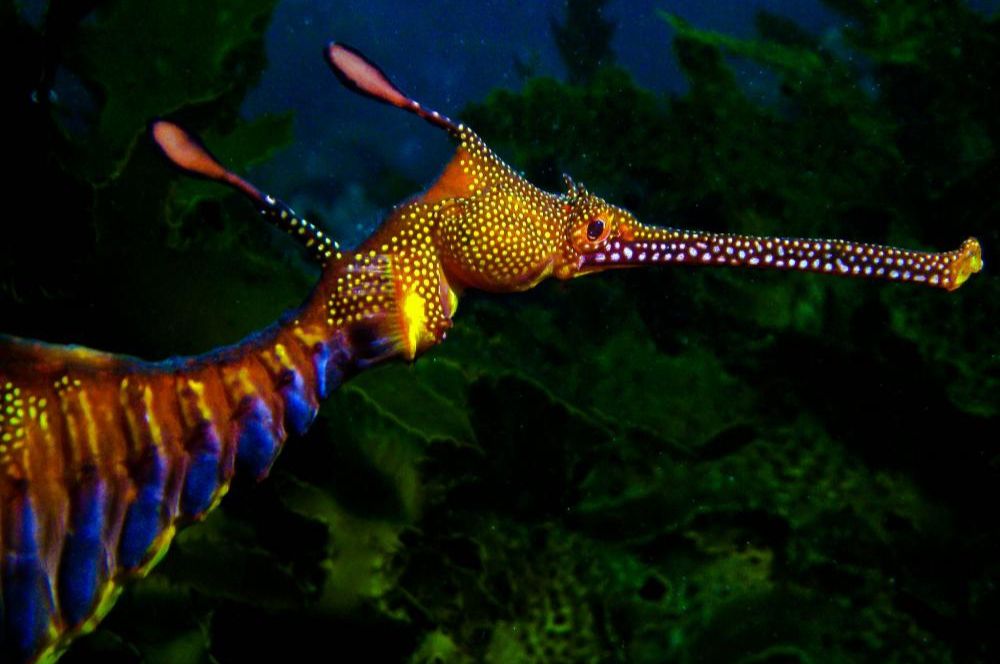
RELATED POSTS
-
Dive with Sea Dragons…
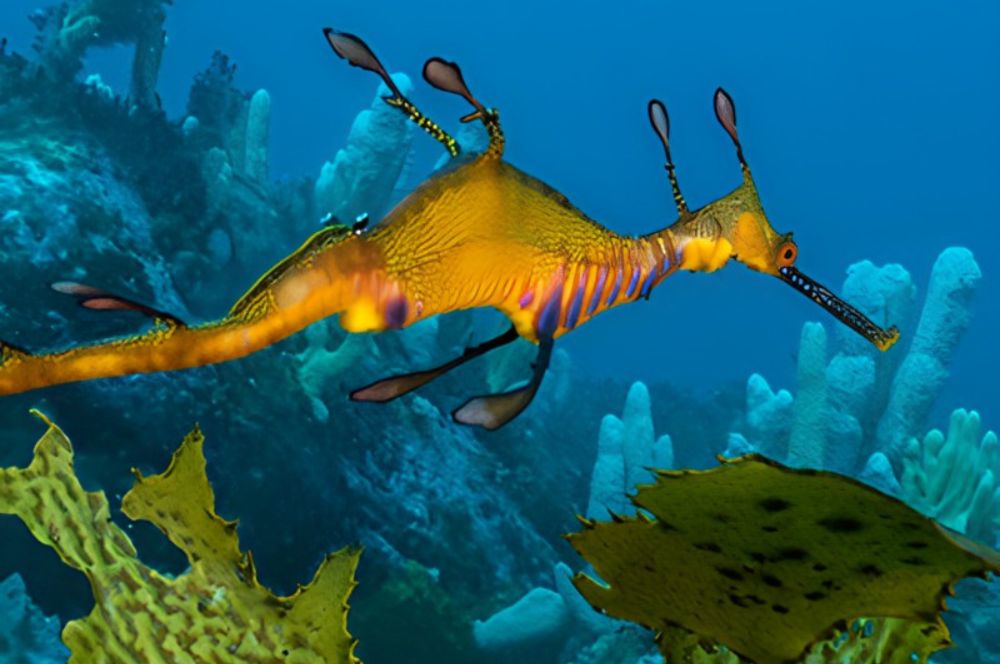
Dive with Sea Dragons…
Join one of our regular seadragon dives and be taught how to spot them […] -
Sydney Diving: Uncover Mermaid's Purses…
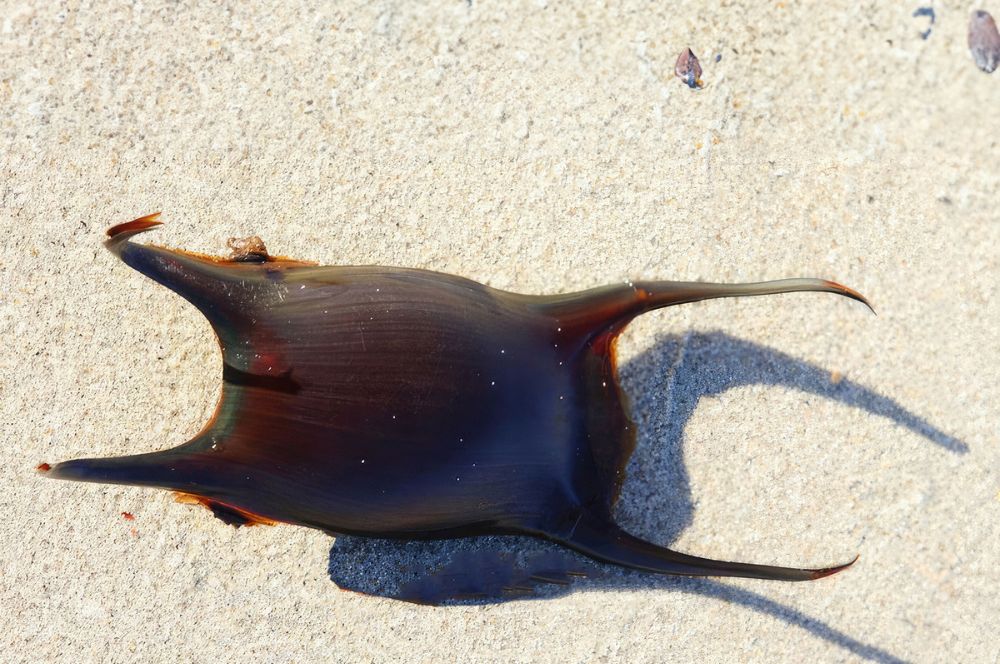
Sydney Diving: Uncover…
Diving into Mermaid's Purses: Discovering Underwater Secrets with Our Sydney Sharks Have you ever encountered […] -
Dragon's Lair | The home of the weedy…

Dragon's Lair | The…
Dragon's Lair | The home of the weedy sea dragon Come in the shop and grab your gear for a day out diving. […] -
Seal Temperature Regulation
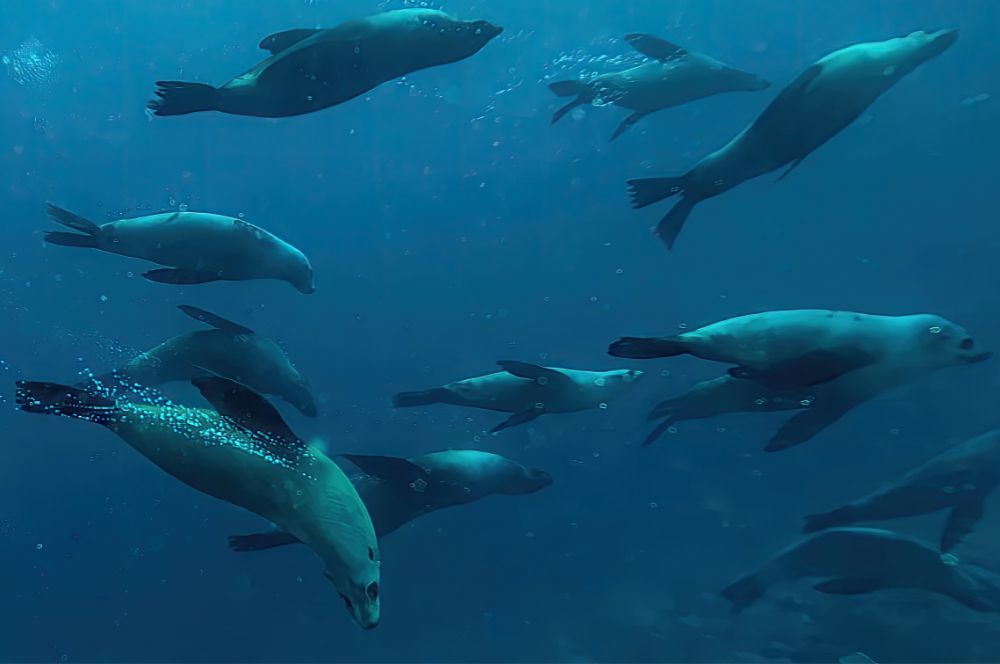
Seal Temperature Regulation
Australian Fur Seals are called fur seals because of the amount of fur they have to protect them against […]
Recent Posts
